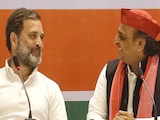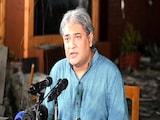The launch of India's maiden human space flight -- Gaganyaan -- has been pushed to the first quarter of 2027, nearly five years later than the original schedule as it races to ace technologies for such complex projects.
The first uncrewed mission of the Gaganyaan project is expected to be launched later this year, which will be followed by two more similar missions in 2026, Indian Space Research Organisation (ISRO) Chairman V Narayanan said at a press conference.
"The first crewed mission is targeted for the first quarter of 2027," V Narayanan said and added ISRO would send a half-humanoid robot -- Vyommitra -- as part of the uncrewed mission before sending astronauts to low-Earth orbit.
Prime Minister Narendra Modi announced the Gaganyaan project during his Independence Day address in 2018 and set a target of 2022 for achieving India's maiden human space flight.
The project has run into several delays, partly due to the Covid pandemic that affected the training of astronauts, and complexities of mastering the crucial technologies required for the mission. The crewed mission was expected to take place in 2025 and later slotted for 2026. It has now been delayed to the first quarter of 2027.
Besides developing the human-rated launch vehicle for the Gaganyan mission, ISRO scientists have also built from scratch the Environment Control and Life Support System (ECLSS) for the mission, which will involve taking the astronauts to low-Earth orbit of 400 kilometres above the Earth for a few days and getting them back safely.
The ECLSS will help maintain cabin pressure, humidity, temperature, quality of air and personal hygiene management system in the spacecraft during the duration of the mission.
"It is a very complex process. For the first time we undertook this development. I want to say, 90 per cent of the work is completed and we are in the final phase of qualification," Narayanan said.
If successful, India will become only the fourth country after Russia, the US and China to independently launch humans into space.
V Narayanan said space docking experiments comprising two satellites launched by a PSLV rocket in December were successful and ISRO was planning SPADEX-2.
A proposal on this will be presented to the government soon, he said.
He said judicious use of fuel during the ongoing SPADEX mission allowed ISRO to conduct more experiments in orbit that included circumnavigating one satellite around the other in March.
Scientists also demonstrated open and closed loop circumnavigation experiments that are considered as foundational technologies for in-orbit servicing of satellites for extension of mission life.
Narayanan said ISRO was hosting, along with the International Astronautical Federation, the Global Space Exploration Conference (GLEX 2025) from May 7-9, positioning India as a partner in space exploration.
(Except for the headline, this story has not been edited by NDTV staff and is published from a syndicated feed.)















